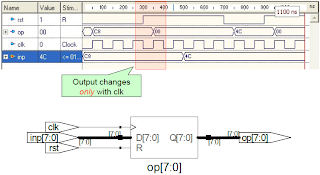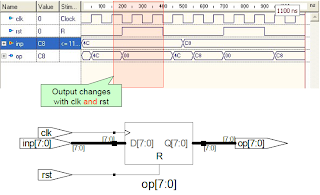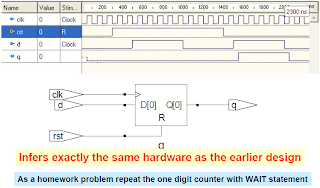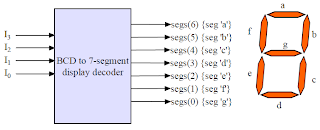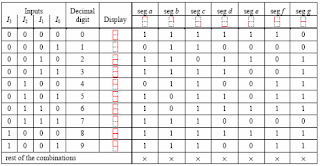• The CASE statement (sequential) is very similar to WHEN (combinational).
• All permutations must be tested, so the keyword OTHERS is often helpful.
• Another important keyword is NULL (the counterpart of UNAFFECTED), which should be used when no action is to take place.
• CASE allows multiple assignments for each test condition while WHEN allows only one.
Syntax
[Label:] case Expression is
when Choices =>
SequentialStatements...
when Choices =>
SequentialStatements...
... {any number of when parts}
end case [Label];
Choices = Choice | Choice | ...
Choice = {either}
Constant Expression
Range
others {the last branch}
Where
process – begin -
function – begin -
procedure – begin -
if – then -
case - => -
loop-
Rules
• The Expression must not be enclosed in parenthesis.
• The type of the Expression must be enumeration, integer, physical, or a one
dimensional array.
• Every case of the Expression must be covered once and only once by the
Choices.
Synthesis
• Assignments within case statements generally synthesize to multiplexers.
• Incomplete assignments (i.e. where outputs remain unassigned for certain input conditions) in unclocked processes synthesize to transparent latches.
• Incomplete assignments in clocked processes synthesize to recirculation around registers.
Example
case ADDRESS is
when 0 =>
-- Select a single value
A <= '1';
when 1 =>
A <= '1'; -- More than one statement in a -- branch
B <= '1';
when 2 to 15 => -- Select a range of ADDRESS -- values
C <= '1';
when 16 | 20 | 24 => -- Pick out several -- ADDRESS values
B <= '1';
C <= '1';
D <= '1';
when others =>
-- Mop up the rest
null;
end case;
information shared by www.irvs.info
